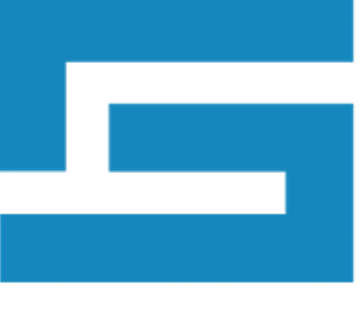What You Need to Know
The Dark Web is often shrouded in mystery and intrigue, but understanding its concept and infrastructure is essential for anyone in the cybersecurity industry. In this article, we will delve deep into the world of the dark web, discussing its definition, its differences from the deep web, and the underlying technology that makes it work.
It's important to note that you should not visit the dark web outside of a secure environment. Proceed with caution.
Understanding the Concept of the Dark Web
Before we dive into the specifics, it's crucial to have a clear understanding of what the Dark Web actually is. The dark web refers to a collection of websites that are not indexed by regular search engines like Google or accessible through traditional web browsers. These sites are intentionally hidden and require specialized tools to access.
Curious about how companies like GroupSense monitor the deep and dark web to keep client information safe? Learn more about our internal intelligence platform, Tracelight.
What is the Dark Web?
At its core, the dark web is a part of the internet that is intentionally hidden and anonymous. It operates on networks like Tor, which routes users' internet connections through a series of encrypted relays, making it difficult to track their online activities. This anonymity can be appealing for those seeking privacy, but it also provides a haven for illegal activities.
When it comes to understanding the dark web, it is essential to recognize that it is not a single entity or a specific place on the internet. Instead, it is a vast network of hidden websites, forums, and marketplaces that exist within the encrypted layers of the internet. These websites often have URLs that end with the .onion domain, indicating their presence on the dark web.
One of the primary reasons why the dark web is shrouded in mystery is its association with illicit activities. While it is true that illegal marketplaces, such as the infamous Silk Road, have operated on the dark web, it is essential to note that not all websites on the dark web are engaged in illegal activities. Many websites focus on providing a platform for free speech, activism, and privacy protection.
Exploring the dark web requires the use of specialized software, such as a Tor browser, which allows users to access websites anonymously. The Tor browser encrypts users' internet traffic and bounces it through a network of volunteer-operated servers worldwide, known as nodes or relays. This process makes it extremely challenging for anyone to trace the user's online activities back to their physical location.
The Difference Between the Dark Web and the Deep Web
It's important to distinguish between the dark web and the deep web. The deep web refers to all the web pages that are not indexed by search engines, including databases, private networks, and other content that is not publicly accessible. The deep web is estimated to be several times larger than the surface web that we commonly use.
While the deep web includes websites that are not indexed, the dark web specifically refers to websites that are intentionally hidden and accessible only through specific means. These websites require users to take extra steps, such as using specialized software or knowing the exact URL, to access them.
Many legitimate organizations and institutions operate within the deep web. For example, private databases, academic journals, and government resources often reside in the deep web to protect sensitive information from unauthorized access. The deep web plays a crucial role in ensuring data privacy and security for various entities.
It's important to note that not all content within the deep web or the dark web is illegal or malicious. While the dark web is often associated with cyber criminal activities, it also serves as a platform for individuals living under oppressive regimes to access uncensored information and communicate with others securely.
Understanding the nuances between the dark web and the deep web is essential to have a comprehensive view of the internet's hidden layers. While both have their fair share of legitimate and illegitimate activities, it is crucial to approach these topics with caution and a critical mindset.
The Infrastructure of the Dark Web
Now that we have a basic understanding of the dark web, let's explore how its infrastructure works and the technology behind it.
How the Dark Web Works
The dark web operates by utilizing a complex system of encryption, anonymity, and routing. When a user tries to access a website on the dark web, their connection is rerouted through several layers of encrypted relays, making it difficult to trace back to their original location. This system makes it challenging for authorities to identify and apprehend individuals involved in illegal activities on the dark web.
The Role of Tor and Other Anonymous Networks
Tor, short for "The Onion Router," is one of the most popular tools for accessing the dark web. It routes users' internet traffic through a network of volunteer-operated servers, encrypting the data at each step. Tor makes it difficult for anyone to trace the connection, providing users with anonymity. Other anonymous networks, such as I2P (Invisible Internet Project), also play a role in facilitating access to the dark web.
Navigating the Dark Web
Accessing the dark web requires specific tools and precautions to ensure safety and protect your identity. It's important to note that GroupSense does not encourage readers to access the dark web. The only way to avoid the dangers of the dark web are to avoid it.
Tools Required to Access the Dark Web
The most commonly used tool for accessing the dark web is the Tor Browser, which is freely available for download. The Tor Browser allows users to navigate the internet anonymously and access dark web websites. Other tools, such as virtual private networks (VPNs), can provide an additional layer of security.
Safety Measures While Browsing the Dark Web
Browsing the dark web can expose users to various security risks. To minimize these risks, it is essential to follow safety measures such as disabling plugins, avoiding suspicious links, and being cautious about sharing personal information. It is also advisable to keep antivirus and firewall software up to date to protect against malware and other potential threats.
The Content of the Dark Web
The dark web is not just a haven for illegal activities but also houses various legal content and online communities.
Legal and Illegal Activities on the Dark Web
While the dark web has earned a reputation for illegal activities such as the sale of drugs, weapons, and stolen data, it is essential to note that there are legitimate uses for this hidden network. Whistleblowers, journalists, and individuals living in oppressive regimes often rely on the dark web to share information and communicate safely. However, unlawful activities still pose a significant concern within the dark web ecosystem.
The Dark Web and Cyber Crime
Cyber criminals leverage the anonymity and encryption provided by the dark web to conduct various illicit activities, including hacking, credit card fraud, and identity theft. These criminal activities not only pose a threat to individuals but also have significant economic and societal implications.
The Impact of the Dark Web on Society
As the dark web continues to evolve, it raises significant concerns regarding privacy, law enforcement, and individual freedoms.
The Dark Web and Privacy Concerns
With governments and corporations increasingly monitoring online activities, the dark web represents an escape for those seeking enhanced privacy. However, the obscurity of the network also presents challenges for law enforcement agencies trying to investigate cyber crime and protect citizens.
The Dark Web and Law Enforcement
The dark web poses a unique challenge for law enforcement agencies worldwide. The anonymous nature of the network makes it difficult to identify and apprehend those engaging in illegal activities. Governments and international organizations are continually developing strategies to combat cyber crime and ensure the safety of online spaces.
In conclusion, the dark web is a fascinating but complex part of the internet. Understanding its concept, infrastructure, and the risks involved is crucial for anyone interested in exploring this hidden world. As technology continues to advance, it is essential to strike a balance between privacy and security to ensure a safe and ethical online environment.







